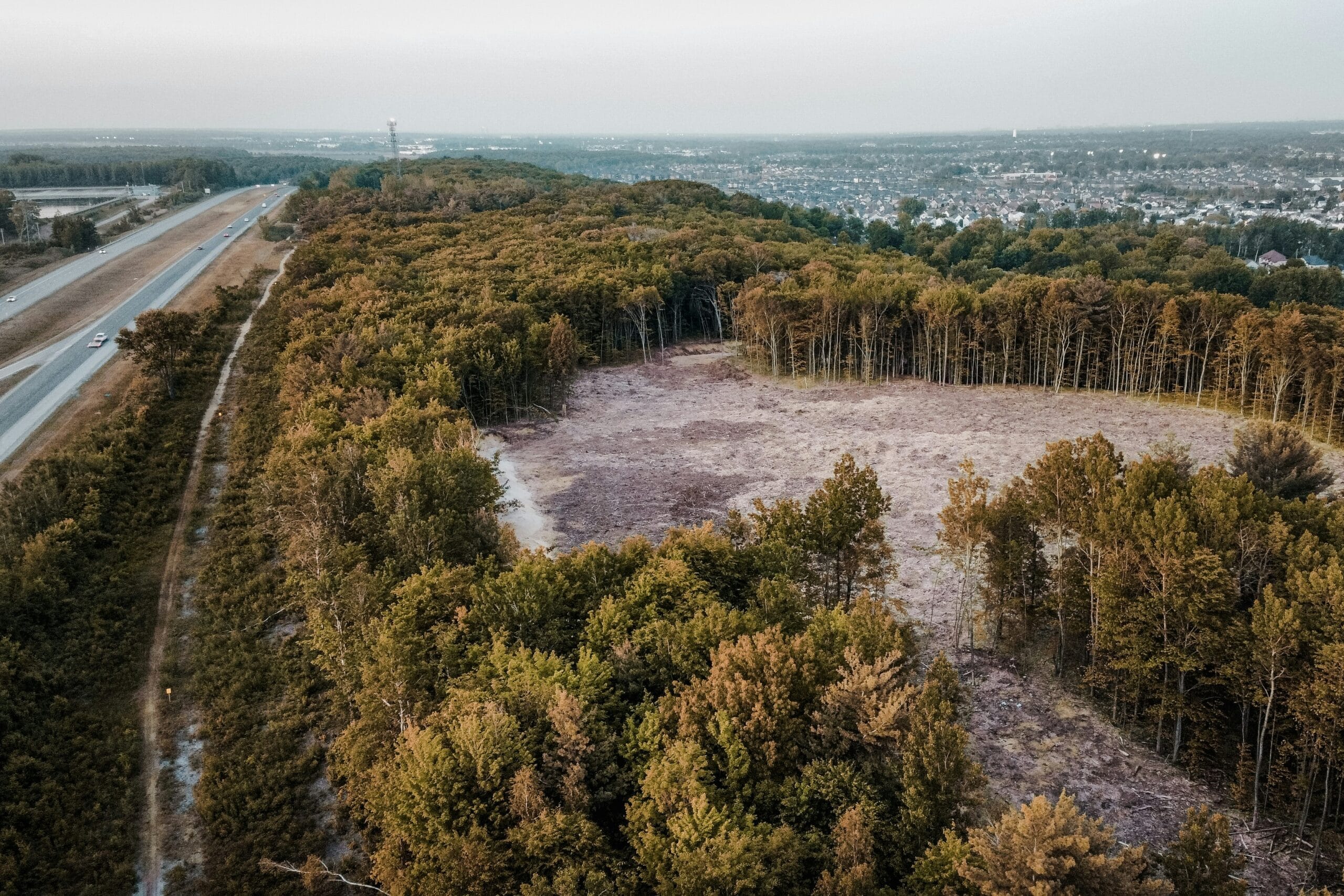Few pieces of legislation have generated as much attention across global supply chains as the EU Deforestation Regulation (EUDR). Created to ensure that products placed on the EU market do not drive deforestation or forest degradation, it stands as a key pillar of the Union’s sustainability ambition.
Yet, as the Regulaion moves from political agreement to practical implementation, its journey has been anything but straightforward. Timelines have shifted, requirements have been refined, and discussions on further adjustments are still unfolding.
In this article, we take a closer look at how the EUDR has evolved, the latest proposed targeted measures to ensure a timely implementation, and what these developments mean for businesses preparing to comply.
Want someone with deep experience and connections in the EU to help guide your sustainability strategy? Get in touch!
EU Deforestation Regulation: The Original Proposal
A flagship initiative under the European Green Deal, the EU Deforestation Regulation was proposed by the European Commission in November 2021 as a response to the EU’s contribution to global deforestation. It covers key commodities such as cattle, cocoa, coffee, palm oil, rubber, soya, and wood, as well as certain derived products.
As detailed in our initial analysis of the EUDR, its primary goal is to ensure that goods sold on the EU market are “deforestation-free”, meaning they were not produced on land that was deforested after 31 December 2020. To achieve this, the Regulation requires companies to conduct due diligence on their supply chains, collect geolocation data for relevant plots of land, and provide detailed risk assessments and mitigation plans.
The EUDR entered into force on 29 June 2023, with an initial implementation timeline giving large companies 18 months (until 30 December 2024) and micro- and small companies an additional six months to comply.
From the start, the Regulation was hailed as a landmark step in sustainable supply chains, but it also raised significant implementation challenges, especially around traceability and data collection in complex global networks.
Understanding the Delays and Adjustments to the EUDR
Since entering into force, the EU Deforestation Regulation has faced growing implementation challenges and increasing political pressure. What began as an ambitious timeline has gradually evolved through formal postponement, simplification efforts, and now discussions of another possible delay. Here’s a closer look.
June 2023 – Regulation enters into force
The EUDR entered into force on 29 June 2023, with its due diligence obligations originally scheduled to apply from 30 December 2024 for most operators, and 30 June 2025 for SMEs. From the outset, concerns were raised about unclear definitions, the readiness of the IT system, and the administrative capacity of national authorities.
December 2024 – Formal postponement by one year
In December 2024, the Council and Parliament adopted the EUDR officially postponing the Regulation’s application by twelve months. The new dates were set to be 30 December 2025 for medium and large operators, and 30 June 2026 for micro and small enterprises.
The decision was justified as necessary to give Member States, businesses, and trade partners more time to prepare, and to ensure that the IT infrastructure would be operational before enforcement began.
April–May 2025 – Simplification and implementation measures
As highlighted in our May Agri-food newsletter, in spring 2025, the Commission published an updated Guidance Document, new FAQs, and adopted an Implementing Regulation laying down the technical and procedural rules for application. It also introduced the long-awaited country risk classification system to differentiate low-, standard-, and high-risk sourcing areas.These measures aimed to provide clarity and reduce administrative burden.
September 2025 – Updated guidance and clarifications
In September 2025, the Commission issued updated guidance refining key concepts and confirming implementation dates, all detailed in the September issue of our Agri-food newsletter. In essence, the institution clarified how negligible risk and supply chain complexity affect due diligence depth, clarified the legality requirement, and confirmed that packaging is only covered when sold as a product in itself. The guidance also reaffirmed that the EUDR prevails over the CSDDD where both apply.
October 2025 – Proposal for targeted solution supporting implementation
Most recently, the Commission proposed targeted amendments to delay the EUDR’s application by one year for micro and small enterprises, along with additional simplification measures.
Citing IT concerns, the Commission had initially considered a one-year delay for all companies, but the new proposal limits this extension only to small businesses. Medium and large firms must still comply from 30 December 2025. The Commission also suggests that only importers, not downstream users of imported commodities, will be required to submit due diligence statements.
The European Parliament and Council will now examine the proposal, aiming for swift adoption by the end of 2025.
Analysing the Current Scenario and What It Means for Businesses
The EUDR is entering a phase of adjustment. Successive postponements and simplifications reflect the EU’s effort to reconcile ambition with the practicalities of implementation. While these changes may help ensure a smoother rollout, they also highlight the challenge of maintaining policy coherence amid evolving economic and political priorities.
The delay of the IT system remains a key operational constraint. Although this has been long anticipated, the complexity of developing a robust, interoperable platform across Member States should not be underestimated. Meanwhile, external factors, such as global trade, supply chain pressures, and competitiveness concerns, continue to influence the Regulation’s timeline and scope.
Recent guidance updates have aimed to provide greater clarity and flexibility for operators preparing for compliance. Any future revisions to the Regulation will likely focus on ensuring proportionality and workability, while keeping sight of its broader sustainability objectives. The coming months will therefore be critical in determining whether the EU can balance credibility, predictability, and ambition as the EUDR moves from design to delivery.
What It Means for Businesses
For companies, the impact of these developments is mixed.
- Prepared businesses that have already invested in traceability systems and supplier engagement may feel penalised, as their efforts are not matched by timely enforcement or recognition.
- Less prepared operators, on the other hand, gain valuable breathing space to collect geolocation data, strengthen risk assessments, and engage suppliers.
- SMEs and smaller suppliers benefit from simplifications that reduce administrative complexity, but also face continued uncertainty about what the final compliance expectations will look like.
Overall, these shifts mean that the EUDR is moving away from a stable regulatory framework and becoming a moving target; one that demands constant monitoring and agile planning from European companies.
Planning with Purpose: Recommended Next Steps for Your Organisation
Despite the uncertainty, companies should not pause their preparations. The Regulation’s core objectives remain unchanged, and the expectation of deforestation-free supply chains is unlikely to disappear. Below, we’ve highlighted some key steps we recommend for organisations under the EUDR’s scope:
- Monitor legislative and technical developments closely, particularly the official confirmation of the revised implementation date for small businesses and any further amendments introduced during the legislative process.
- Conduct risk assessments for all commodities and products under the EUDR scope, using the most recent data and supplier information available.
- Review and update internal implementation plans, ensuring flexibility to adjust to potential shifts in timelines or requirements.
- Engage suppliers proactively, especially those in higher-risk regions, to improve traceability and data collection.
- Scenario-plan across possible timeline shifts, evaluating how further postponement or simplification could affect sourcing strategies, costs, and compliance readiness.
- Maintain documentation and due diligence processes, even in the face of delay, as early compliance efforts will pay off once enforcement begins.
Key Takeaways
The EU Deforestation Regulation remains a landmark piece of legislation, but its journey so far highlights the complexity of turning sustainability ambition into practice. Successive delays and simplifications may ease short-term pressure, but they also illustrate the delicate balance between ensuring workability and maintaining the Regulation’s long-term impact and credibility.
While the path remains uncertain, the direction is not. Businesses that continue preparing for deforestation-free supply chains will be best positioned once the Regulation takes full effect.
At Ohana, we help businesses navigate this uncertainty with clarity, strategic foresight, and practical support. Get in touch to find out how our team can assist you in planning compliance, engaging stakeholders, and staying ahead of the latest EUDR developments.


